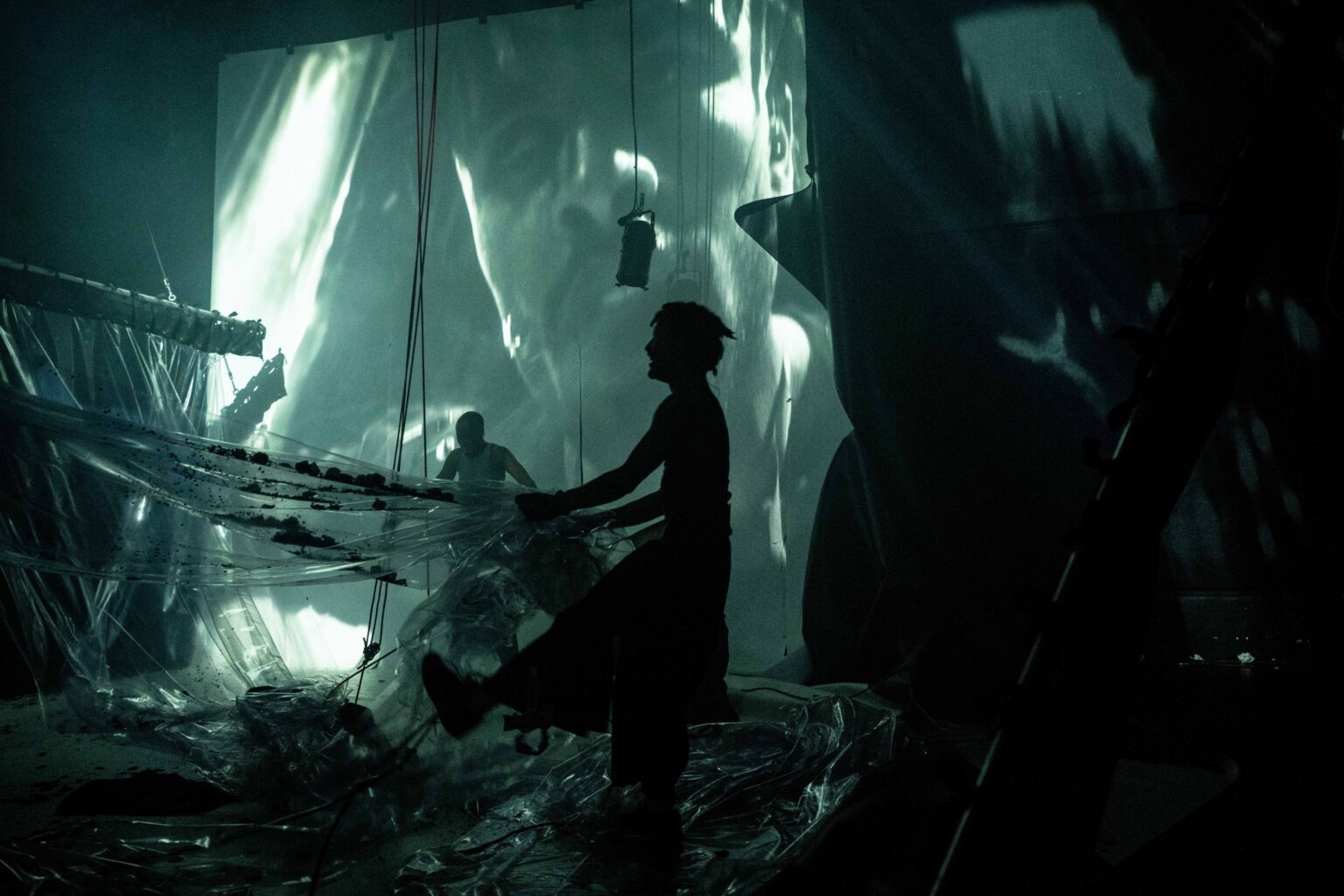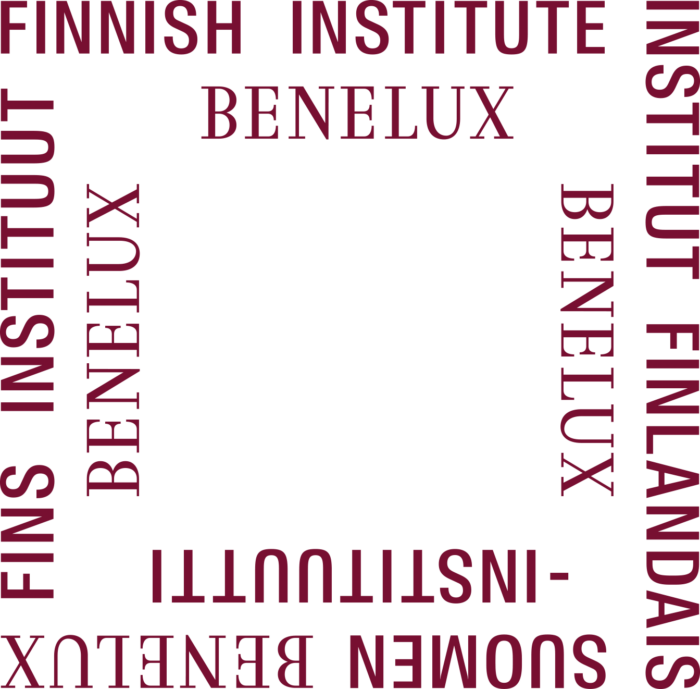
FRANK is short for FRANKENSTEIN, could you share with us how you approached the research and working process for this new performance?
FRANK follows JEZEBEL and DARKMATTER as the third and closing chapter of a trilogy. The trilogy attempts to detach bodies from forced perceptions and their daily corporeal realities, underlining the complexity and contradictory nature of images that seem recognizable at first glance. While leaning towards distortion as a leitmotif to generate ways of embodiment, temporalities, and ’unpredictable’ forms for JEZEBEL and DARKMATTER, it became apparent that the works evoked monstrous figures and tendencies, which felt like a welcoming place to investigate.
‘’The human is the central character, but the human has never been apart from the monster. Mythologically speaking, seen through archetypal lenses. The monster is always present with the human. Even when the city tries to distance itself from the wilds, it needs the wilds to recognize itself as civil, as sophisticated, as arrived, as modern.’’ Báyò Akómólafé.
More so than (re)producing a physical or visual portrayal of the monster, I became interested in how monsters or the monstrous are reifications and metaphorical embodiments of the beliefs and narratives that terrify and horrify us.
For FRANK, Omagbitse Omagbemi, Mulunesh, Malick Cissé, the other members of the artistic team and I deviated from the notion that the monster is something we must overcome, conquer, master, or cast off. Instead, we explored the processes of monster making and the horrors and/or approbation these could entail. We allowed these pieces of information to be the generators of image-making, as well as performative, sonic, and text material that explore tension, ambivalence, uncanniness, enigma, and uncertainty.
Because FRANK brings together so many elements — physical performativity, embodiment, text, sound, scenography, light, and video — and also engages with several histories that I believe are deeply relevant to the topic, it has been truly wonderful to have the opportunity (thanks to the incredible support of GRIP and other partners) to dedicate extensive time and space to the research and creation process. Part of this process took place in Suriname, and it allowed all these elements to come together — to enter into dialogue, to merge, clash, negotiate, and ultimately support one another.
Julia Kristeva defines horror as a breakdown in meaning caused by the loss of boundaries between self and other, a concept she terms abjection. One agreement was explicit: all must deal with a sense of collapse and decay.
FRANK is your third work to be presented in Moving in November, following JEZEBEL and DARKMATTER. It is an extremely dark and destabilising performance, where you use the principle of distortion once again, but also working with decay and decomposition. We witness something gradually breaking down. Could you elaborate on these recurring principals in your work and the new ones you introduce in FRANK?
The arrival of the recurring principal distortion, which is now accompanied by decay and decomposition for FRANK, are tools that I use to help me navigate through the process of image making and representation. Retrospectively speaking, I realize that I enjoy creating a space of uncertainty, a space that moves on the precipices of things, not only for those who are watching but also those performing, as I believe it provides us a space of re-encountering, critical fabulation, and staying with the troubles.
I suppose that could be the reason why the trilogy has a dark nature.
I recently saw a lecture performance in which an intriguing question was raised: How did the monsters that once inhabited our dreams and fiction made their way into reality? How do you relate to this question?
Ah, that is a question that sticks with me personally and tends to spin in and out of my mind.
Through the writing and thinking of Báyò Akómólafé, Christina Sharpe, and Julia Kristeva, who, amongst others, have been central inspirational pillars for FRANK, my own thinking broadened on monsters, the monstrous, and monstrosities. For me, monsters and monstrosities have always been part of the realities most of us share. As for many parts of the global north, the desire for this reality to portray itself as civil and fixed meant that the monsters had to move underground, outside of the civil fences, to the background, or hide in disguise and thus become fictional. Sadly, by placing them elsewhere, some of us could not receive their warning calls about what terrors the civil and fixed reality brings along.
So, let’s welcome those monsters back into our reality to help us to, as I quote a part of Báyò Akómólafé’s article: Sanctuary is not a place: “dwell in undoing, speak without anchoring in mastery, love without arriving, to co-compose with the broken, the spored, the singed, and the strange.”
Cherish Menzo: FRANK
Stoa 10.11.2025 20.00 / 11.11.2025 20.00
Soup Talk 11.11.2025 12.00 @Caisa
Concept, direction: Cherish Menzo
Creation, performance: Malick Cissé, Mulunesh, Omagbitse Omagbemi, Cherish Menzo
Sound design: Maria Muehombo a.k.a M I M I
Video design: Andrea Casetti
Sound and video engineering: Arthur De Vuyst
Set design: Morgana Machado Marques
Lighting design: Ryoya Fudetani
Dramaturgy: Johanne Affricot, Renée Copraij
Costumes: Cherish Menzo
Text: Khadija El Kharraz Alami, Cherish Menzo
Artistic advice: Khadija El Kharraz Alami, Nicole Geertruida
Surtitles: Jennifer Piasecki
Technician on tour: Pieter-Jan Buelens, Arthur De Vuyst, Ryoya Fudetani, Hadrien Jeangette
Graphic design: Nick Mattan
Thanks to: Mildred Caprino, Anne Goedhart, Rodney Frederik & Winti Formation “Krin Ati,” Daryll Geldrop, Ernie Wolf, Sandra Menzo, Shavelie Menzo, Madeleine Planeix-Crocker, Sarah Garnaud, Alice Bröker, Johanna Cool, Anne de Andrade, Victor Dumont, Keiko Yamaguchi, Haruna Tanaka, Sensei Taneda, Ima Tenko
Production: GRIP & Theater Utrecht (Dagmar Bokma, Anne Breure, Maartje de Groot, Teun de Loos, Philip den Uyl, Hanne Doms, Seline Gosling, Anneleen Hermans, Tom Hemmer, Leonie Jekel, Myrthe Ligtenberg, Thomas Lloyd, Rudi Meulemans, Lize Meynaerts, Klaartje Oerlemans, Jennifer Piasecki, Florien Smits, Sylvie Svanberg, Bregt van Deursen, Ad van Mierlo, Yoni Vermeire, Nele Verreyken Vincent Wijlhuizen)
In collaboration with: Dance On Ensemble / Bureau Ritter
International distribution: A propic – Line Rousseau, Marion Gauvent
Co-production: Kunstenfestivaldesarts, Carreau du Temple – Etablissement culturel et sportif de la Ville de Paris, Productiehuis Theater Rotterdam, Julidans Amsterdam, PACT Zollverein funded by the Ministry for Culture and Science of the State of North Rhine-Westphalia, Festival Montpellier Danse 2025, le Centre Chorégraphique National d’Orléans – Direction Maud Le Pladec, Tanzquartier Wien, DDD – Festival Dias da Dança, festival d’Automne à Paris, One Dance Festival, Perpodium
With the support of: Centre nationale de la danse à Pantin, BRONKS, KWP Kunstenwerkplaats, l’Atelier de Paris – Centre de développement chorégra- phique national
With the financial support of: the Flemish Government, Tax Shelter of the Belgian Federal Government via Cronos Invest, BNG Bank Theaterprijs, Charlotte Köhler Prijs van het Cultuurfonds, Culture Moves Europe, a project funded by the European Union and the Goethe-Institut
Photo: Bas de Brouwer
Visit supported by: Government of Flanders, Finnish Cultural Institute for the Benelux
Visit in collaboration : Stoa


